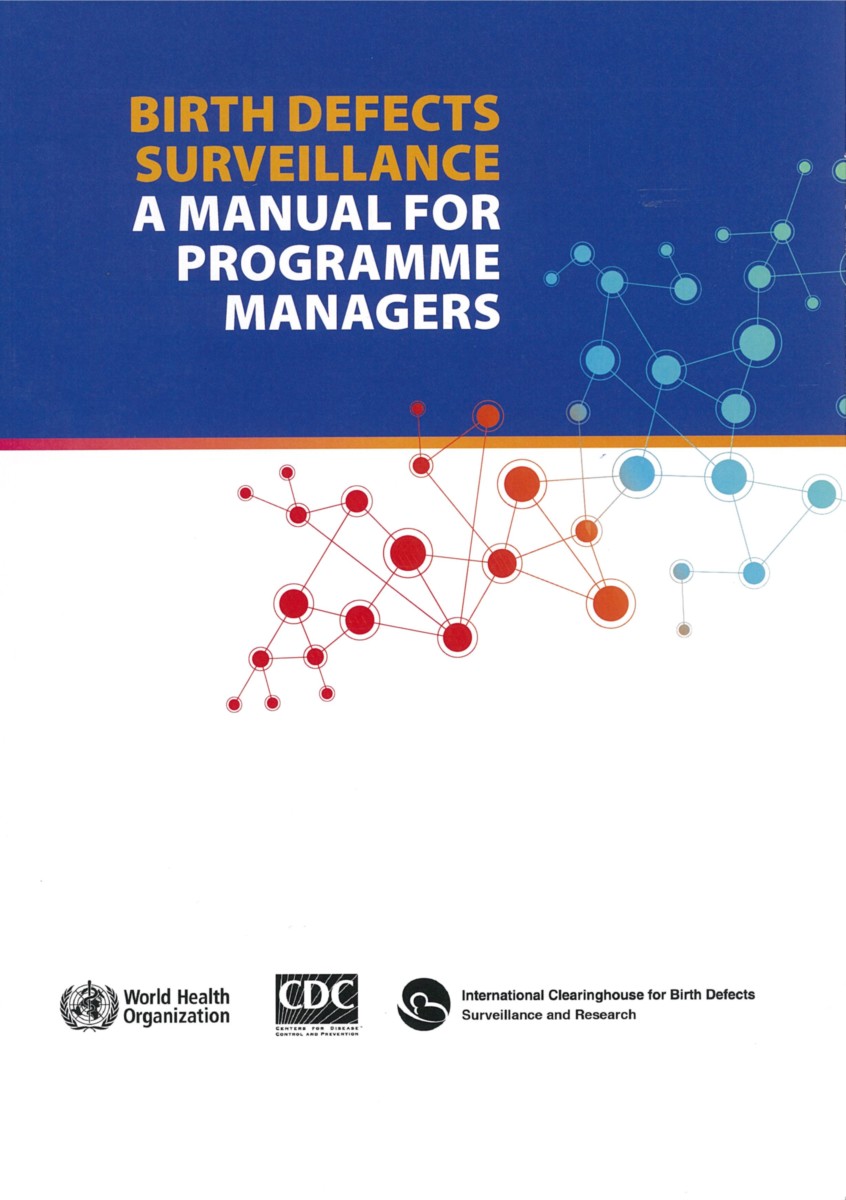Birth Defects Surveillance
A Manual for Programme Managers
Paperback
February 2015
9789241548724
More details
- Publisher
World Health Organization - Published
20th February 2015 - ISBN 9789241548724
- Language English
- Pages 122 pp.
- Size 8.25" x 11.75"
$30.00
Birth Defects Surveillance: A Manual for Programme Managers was highly commended in the Public Health category of the British Medical Association 2015 Medical Book Competition.
Congenital anomalies, also known as birth defects, are structural or functional abnormalities, including metabolic disorders, which are present from birth. Congenital anomalies are a diverse group of disorders of prenatal origin, which can be caused by single gene defects, chromosomal disorders, multifactorial inheritance, environmental teratogens or micronutrient deficiencies.
This manual is intended to serve as a tool for the development, implementation and ongoing improvement of a congenital anomalies surveillance program, particularly for countries with limited resources. The focus of the manual is on population-based and hospital-based surveillance programs. Some countries may not find it feasible to begin with the development of a population-based program. Therefore, the manual focuses on the methodology needed for the development of both population-based and hospital-based surveillance program. Further, although many births in predominantly low- and middle-income countries occur outside of hospitals, some countries with limited resources may choose to start with a hospital-based surveillance program and expand it later into one that is population based. Any country wishing to expand its current hospital-based program into a population-based program, or to begin the initial development of a population-based registry, should find this manual helpful in reaching its goal.
This manual provides selected examples of congenital anomalies. Typically, these anomalies are severe enough that they would probably be captured during the first few days following birth. Also, because of their severity and frequency, these selected conditions have significant public health impact, and for some there is a potential for primary prevention. Nevertheless, these are just suggestions, and countries can choose to monitor a subset of these conditions or add other congenital anomalies to meet their needs. This manual is a collaborative effort between the World Health Organization (WHO), the National Center on Birth Defects and Developmental Disabilities from the US Centers for Disease Control and Prevention (CDC) and the International Clearinghouse for Birth Defects Surveillance and Research (ICBDSR).
World Health Organization
World Health Organization is a Specialized Agency of the United Nations, charged to act as the world's directing and coordinating authority on questions of human health. It is responsible for providing leadership on global health matters, shaping the health research agenda, setting norms and standards, articulating evidence-based policy options, providing technical support to countries, and monitoring and assessing health trends.


